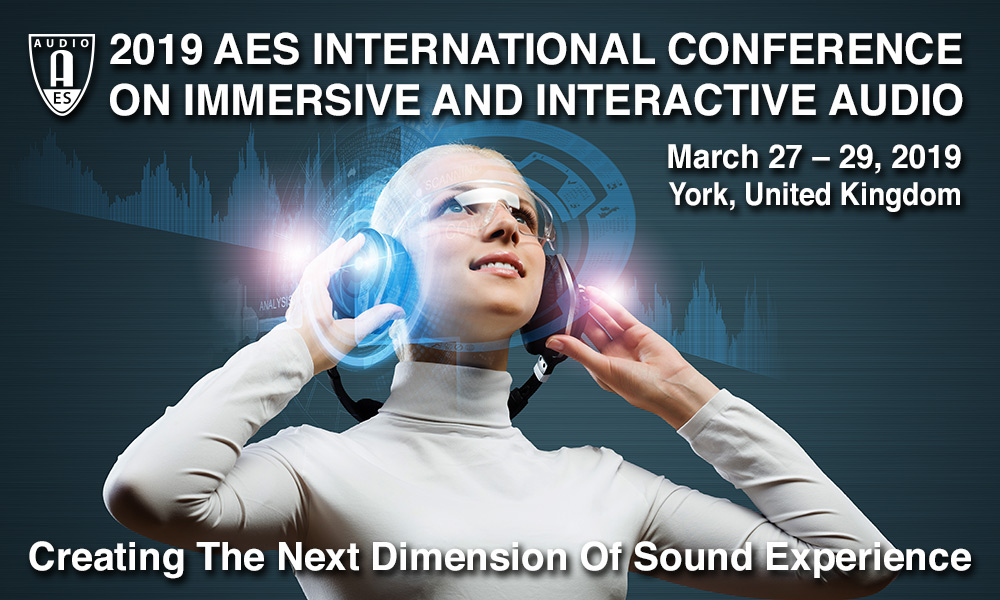| Home | Call for Contributions | Program | Registration | Venue & Facilities | Accessibility & Inclusivity | Travel | Sponsors | Committee | Twitter |

Utresa - Paulina Sundin (7')
Shades of Life - Ben Eyes (8')
Olonoa - Maeve Brayne (14')
Epigraph - Lynette Quek (3')
Interval
Natasha Barrett
Dusk's Gait (2018, duration 12'00)
Dusk's Gait is partly narrative in form while projecting an overarching appreciation of the natural world: as dusk falls, a habitat of fictional creatures is let loose, celebrating moments of real nature that may easily expire. Although acousmatic sounds may appear abstract, they can be imbued with a sense of character through their gait - or literally the manner of moving, which can occur in space, in spectrum and in morphology. In Dusk's Gait, ambisonics spatialisation and custom-made sound analysis and transformation methods are used to create tangible spatial objects, each with a characteristic gait.
Involuntary Expression (2017, duration 17'00)
In Involuntary Expression I was interested in exploring how the spatial and dynamic behaviour of sound can evoke the sensation of a living entity, and further, that of human agency.
To do this, I first captured the physical micro-movements from three living motion sources - crowds attempting to collectively stand still, a cellist and a drummer - using a high-speed and high spatial-resolution 3D motion-capture camera system. Rather than recording the sounds that these people made, I was instead interested in their physical movement that makes no sound in itself. The motion recordings resulted in extensive data documenting precise 3D space and time. I then used this data to control sound synthesis, spatialisation, and to build temporal structures, magnifying micro-movements to fill the expanse of space and spectrum.
Some of the instruments that the performers articulated while being recorded are also revealed in the music. The overarching emphasis is however on physical gestures turned into sound. I would like the listener to feel the music through the sound's behaviour in space, feel the involuntary movement from the inside, and the expression that then unfolds.
The work was commissioned by Notam, with support from the Norwegian Cultural Council.
He slowly fell and transformed into the terrain, part 1. (2016, duration 17'00)
The metal horses had lost their colour. The leaves dry, the stones worn, the ice froze, then waned. He slowly fell, and transformed into the terrain.
This composition - a fiction - takes the listener on a journey in the mind of a character born to explore the harmony between human constructions and nature. As constructions begin to take over, he needs to find a new balance. He slowly falls from the enjoyment of a fairground carrousel and the allure of the natural terrain overwhelms his being. The new balance gradually embodies a landscape of dry leaves and lost children, worn stones, melting snow, and a final release into abstraction.
'He slowly fell, and transformed into the terrain' is in two sections: a main journey and a final coda. (In this concert I play only the main part).
Commissioned by Electric Audio Unit (EAU) with funds from the Norwegian Cultural Council.
Natasha Barrett composes acousmatic and live electroacoustic concert works, sound and multi-media installations, and interactive music. Her work is commissioned, performed and broadcast throughout the world. Beside commissions for specific works, throughout her career she has received grants and artist’s residence invitations, and a solid list of awards and prizes, including the Nordic Council Music Prize. Besides her compositional activities, she is active in performance, education and research. She is co-director of the Norwegian spatial-music performance ensemble Electric Audio Unit (EAU), founder and chairman of 3DA (the Norwegian society for 3-D sound-art) and a member of Ocean Design Research Association. She currently holds a professorship at the Norwegian Academy for Music, Oslo.
Finish
